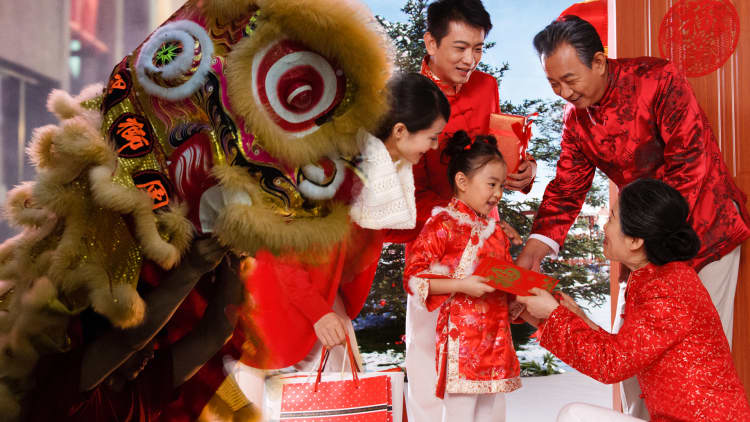Forget January 1. For proponents of Far Eastern culture, the new year in 2018 begins on February 16.
The celebration of Lunar New Year has spread internationally, partly thanks to the far reach of Chinese expatriate communities.
CNBC takes a look at iconic Chinatowns across the world as they see in the year of the dog.
Singapore
Although the Chinese make up the largest ethnic group in Singapore, the city has its own Chinatown, located in its Outram district. After Singapore's establishment in 1824, the Chinese immigrant population boomed. The city state's Chinatown was geographically allocated by its British colonial founder, Sir Stamford Raffles. The area's alternative name — Niu Che Shui, or Bullock-Cart-Water — refers to the archaic practice of fresh water brought into the area by bullock-drawn carts.
London
London's Chinese community originally settled in Limehouse, to the east of the city, in the 18th century, before relocating to Chinatown's current Soho location in the 1950s, seeking cheap rent. In the ensuing decades, workers in their tens of thousands arrived from the former British outpost of Hong Kong. Chinese food businesses were boosted by British soldiers returning from wars in the Far East with a new appetite for Chinese cuisine. London's Chinatown as it looks today began to take shape in the 1980s, when it received its signature Chinese gates.
Toronto
Chinatown in Canada's largest city dates back to the 1870s, with the opening of the first Chinese business — a laundry. Chinese population growth in the following years was slow due to discrimination against Chinese immigrants finding jobs, although by the turn of the 20th century a firm population was established. Toronto's Chinatown comprises of immigrants from Asia broadly, including India, Vietnam and Laos.
New York
Chinatown in Manhattan's Lower East Side has a resident population of approximately 150,000. The Chinese population mainly comes from the provinces of Guangdong and Fujian, as well as Hong Kong. Today, the area boasts hundreds of garment factories with a yearly payroll bill of above $200 million, a jewelry industry worth roughly $100 million in gold and diamond sales annually and over 200 restaurants.
San Francisco
San Francisco's Chinatown claims to be the oldest in North America. The first Chinese immigrants arrived in the city in 1848, and the area is one of San Francisco's most visited neighborhoods.
Johannesburg
Johannesburg's Chinatown is located in the Cyrildene suburb, which until 2000 was known for its Jewish community. It is thought that the first Chinese immigrants arrived in South Africa in the early 19th century.
Melbourne
Melbourne's Chinatown has existed since the goldrush of the 1850s, and claims to be the longest continuous Chinese settlement in the Western World.


